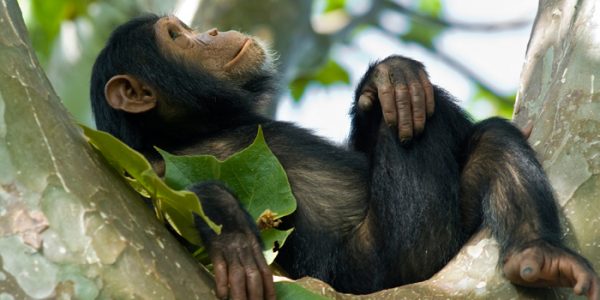There are less than 800 of these amazing creatures alive in the world. Half of them are in Uganda and most live in Bwindi Impenetrable Forest. Learn how you can go trekking there and discover for yourself these endangered but magnificent animals.You can’t visit Mountain Gorillas in any zoo – they cannot survive in captivity. These impressive primates can only be found in the highlands of Uganda and to a lesser degree in Rwanda and the Democratic Republic of Congo.
Male Mountain Gorillas can weigh 500 pounds, are 10 times stronger than any human and can consume 75 pounds a day in flowers, leaves, fruit, roots and bamboo. Few habitats can support these ever-foraging gorilla families.The Bwindi Impenetrable Forest is such an environment. This is an ancient jungle whose thick tree cover provides the deep shade under which Mountain Gorillas thrive. It is also sometimes called the “Place of Darkness”.
It is in this park that fortunate travelers can plan a once-in-a-lifetime adventure to meet these powerful yet shy creatures. Booking a tour with an experienced outfitter who knows just where these elusive gorilla families dwell will ensure a safe but thrilling experience.
The wildlife specialists of Home To Africa Tours & Travel create custom tailored tours throughout Uganda and East Africa. On a Home To Africa excursion, all arrangements and government permitting is done for you. Their talented, multi-lingual guides will bring you up close to the Mountain Gorillas, as well as chimpanzees, leopard, buffalo, hippo and lion.
Here are some clothing suggestions from our guides:
Good boots are essential. Whether climbing or even just trekking, quality boots will keep you warm, dry and steady on the trail.
Layer your clothing. The higher elevations of the Mountain Gorillas can bring cold and rain. With layering, you can add on or take away clothing depending on the day’s (or the hour’s) weather conditions.
Shirts – bring both long and short-sleeve shirts so you can adapt to the changing temperatures.
Pants – both short and long pants will accommodate to your comfort.
Cold season – It is colder from May to September so bring a fleece jacket, gloves and a sweater.
Colors – bright colors may distract the animals, so safari kaki and olive colors are best. Try not to wear black or dark blue as these colors can attract pests such as the Tsetse fly.

